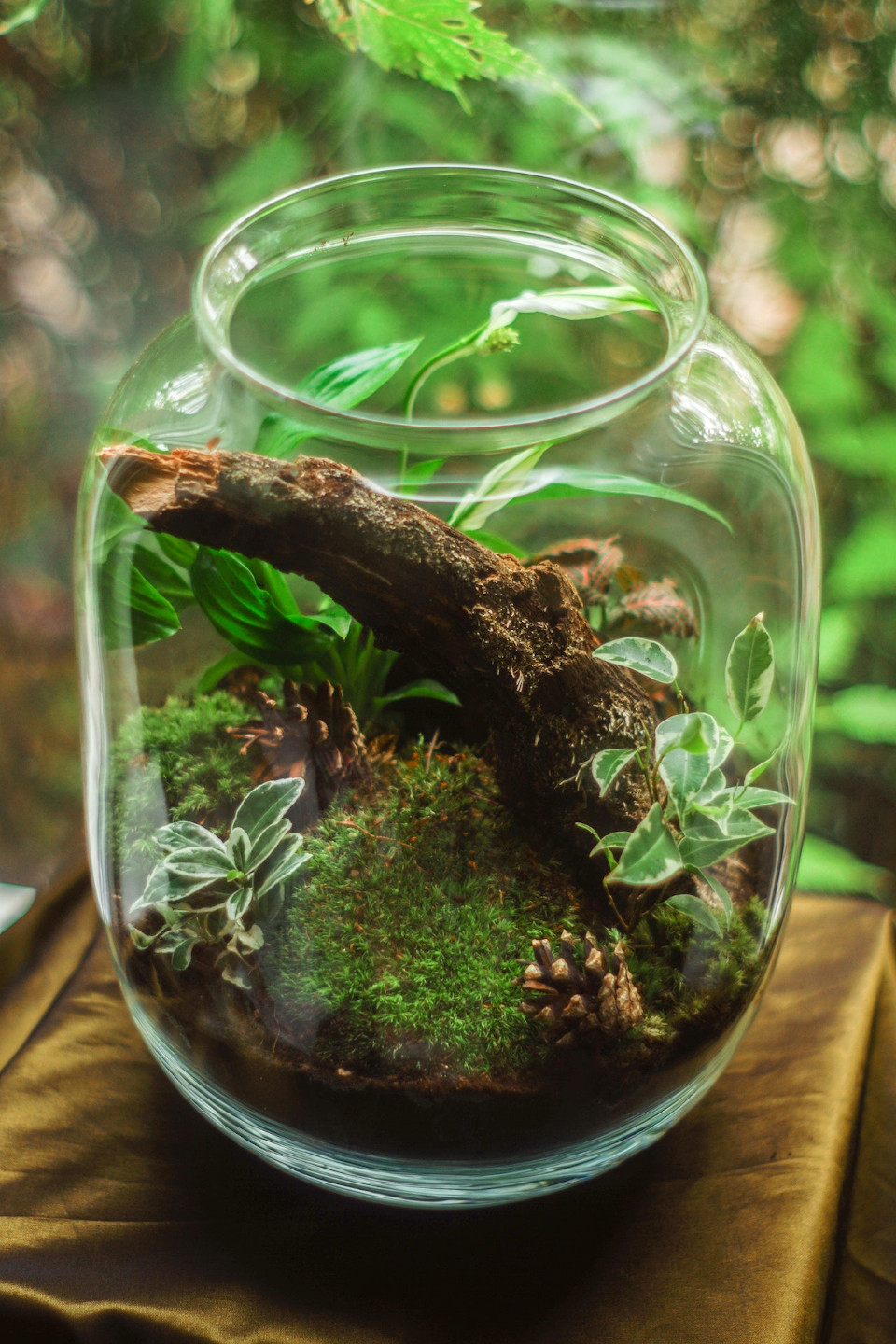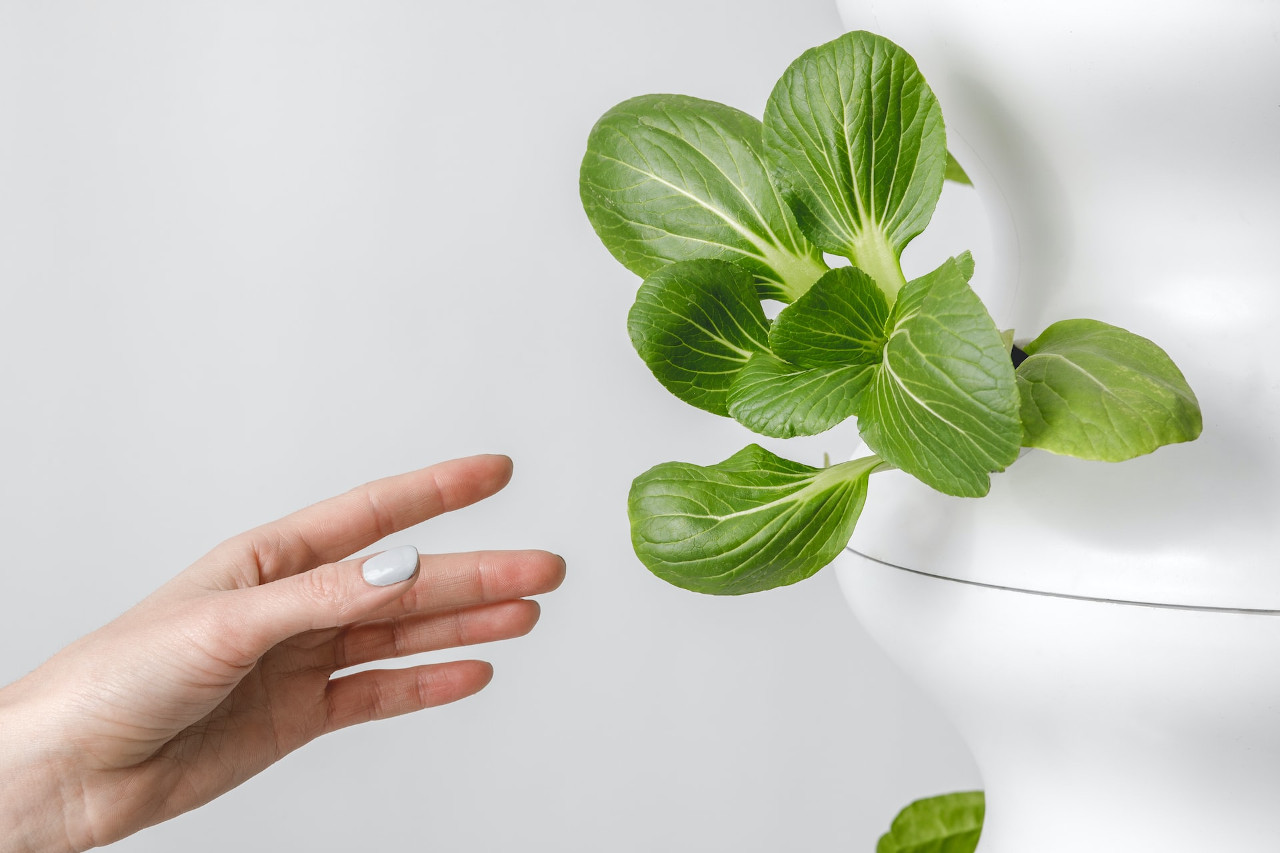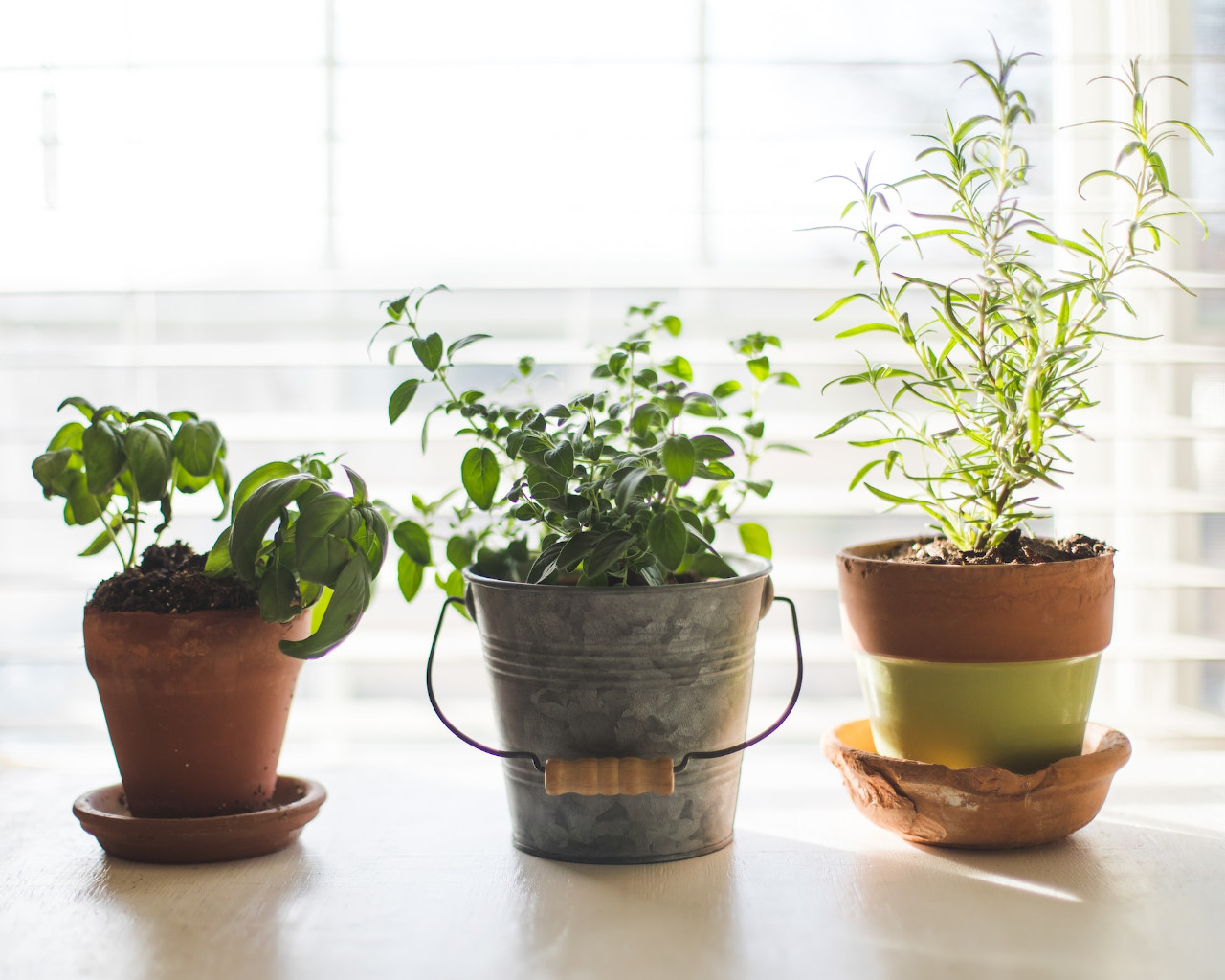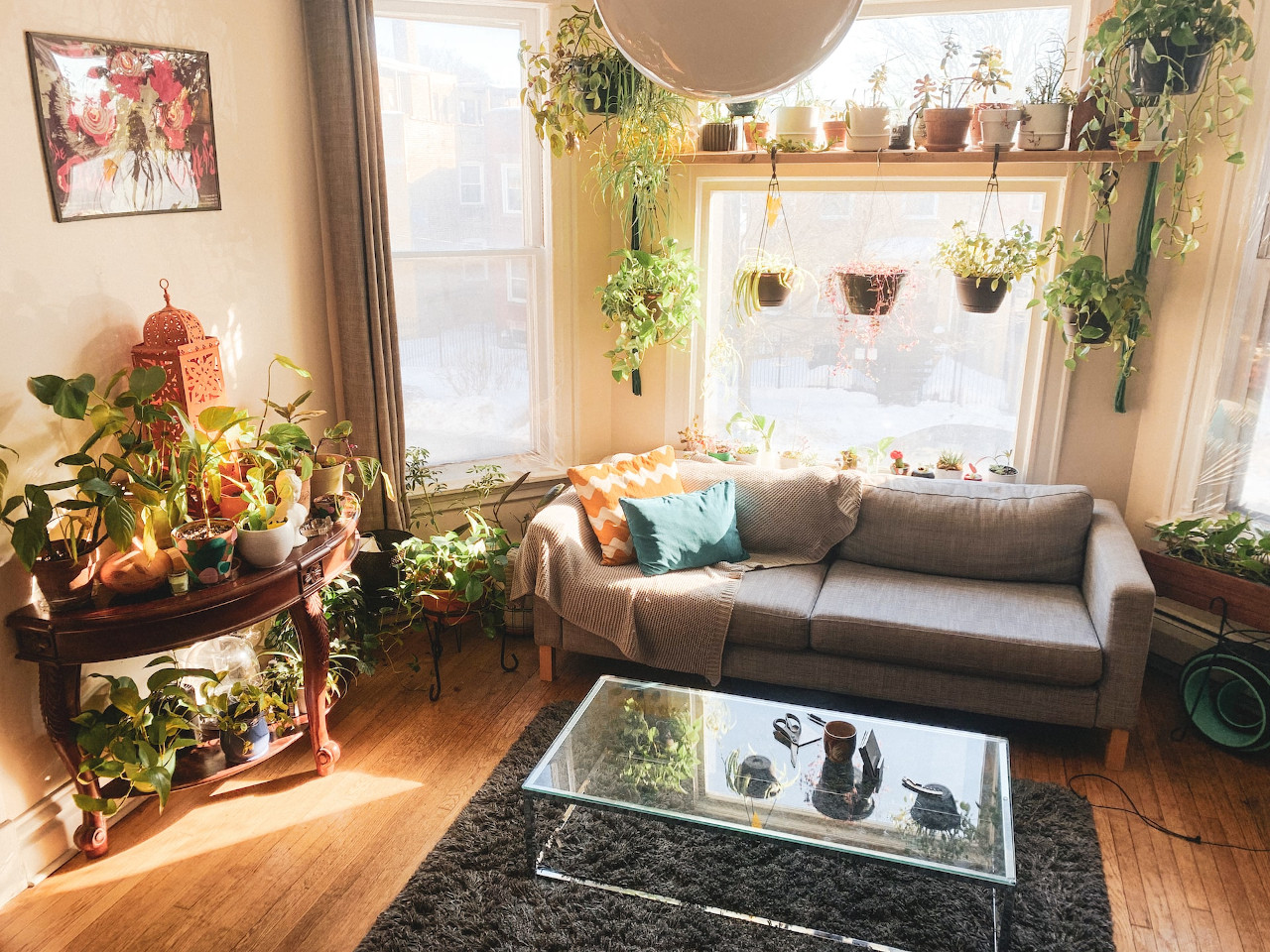Growing plants indoors is an excellent way to bring a touch of nature into your home. But if you’re limited on space or don’t have a lot of natural light, it can be tricky to know how to set up an indoor garden that will thrive.
There are plenty of ways to get creative with your indoor gardening. We’ve rounded up ten of the best ideas to get you started.
1. Try a hanging garden
A hanging garden or just a few hanging plants is a great option if you’re short on space. Use any container you can hang – baskets, pots, or even recycled bottles – and fill it with potting soil and your chosen plants.
Water as needed, and choose containers with drainage holes so the excess water can drip out.
Make sure your plants are getting enough natural light. Hanging gardens should be placed in a bright spot, such as near a window. If you don’t have enough natural light, you should supplement it with artificial lighting.
2. Try an Aquarium Garden
Aquariums make beautiful and unique indoor gardens! They are a beautiful and low-maintenance way to bring some greenery into your home. Plus, they can help purify the air and provide your fish with a natural food source.
You can fill them with aquatic plants, rocks, and even small fish.
If you’re thinking of setting up an aquarium garden, there are a few things you’ll need to consider. First, choose a location that gets plenty of sunlight. Then, decide on the type of plants you want to grow. Some good options include water sprite, hornwort, and Java fern.
Once you’ve selected your plants, it’s time to prepare the tank. Fill it with fresh water and add a layer of gravel or sand for the plants to root in. You can then start planting your aquarium garden. Leave enough space between each plant, so they have room to grow.
3. Create a terrarium

Terrariums are self-contained gardens perfect for people who want to create their own little ecosystem. They’re easy to care for and can be made in any size or shape of the container.
To make one, start by adding a layer of gravel or sand to the bottom for drainage. Then, add a layer of activated charcoal (this helps to keep the terrarium clean). Next, add a layer of potting soil and start adding your plants. Once you’ve added all your plants, mist them with water and close up the container.
A terrarium is a fun, cheap, and easy way to bring a bit of the outdoors inside, and there are lots of different plants that can thrive in this type of environment. Here are some of the best options
- Ferns: Ferns are beautiful, air-purifying plants that come in various shapes and sizes. They do best in terrariums with high humidity levels, so make sure to mist them regularly.
- Spider plants: Spider plants are perfect for beginners, as they are very easy to care for. They prefer bright, indirect sunlight and well-draining soil.
- Venus flytraps: These Carnivorous plants are definitely not for everyone, but they make a fascinating addition to a terrarium. Venus flytraps need bright light and high humidity, and you should feed them live insects every few weeks.
With so many different options available, it’s easy to create a unique and beautiful terrarium that suits your style.
4. Wall-Mounted Gardens
One of the great things about wall-mounted gardens is that you can customize them to suit any space. Whether you have a small balcony or a large patio, there’s bound to be a wall-mounted garden that’s perfect for you.
And, best of all, you can grow just about any plant in a wall-mounted garden. From herbs and spices to flowers and vegetables, the sky’s the limit on what you can grow.
If you’re looking for some inspiration, here are a few of the best plants to grow in a wall-mounted garden:
Herbs: Herbs are versatile, delicious, and easy to grow, making them ideal for wall-mounted gardens. Popular options include basil, oregano, rosemary, and thyme.
Flowers: Add some color to your wall-mounted garden with beautiful flowers. Sunflowers, petunias, and geraniums are all excellent choices.
Vegetables: With some care, you can even grow vegetables in your wall-mounted garden. Tomatoes, peppers, eggplants, and cucumbers are all possible options.
5. Make a pallet garden
Pallets are an inexpensive way to create a vertical garden, which is great if you don’t have a lot of floor space. To make one, start by finding a pallet in good condition (you don’t want one that will fall apart).
Next, sand down any rough edges. Paint or stain the wood if you like. Once the pallet is ready, nail or screw it to a wall, and then fill each slat with potting soil. You can then add your plants and water as needed.
Growing plants on pallets is a great way to add some greenery to your indoor space. Pallets provide a sturdy base for plants and can be easily hung on walls or placed on shelves.
Plus, using pallets helps to recycle material that would otherwise end up in landfills.
However, there are some challenges to growing plants on pallets indoors. One is that pallets can be difficult to find. Another is that pallets are often made of treated wood, which can release chemicals into the soil and potentially harm your plants.
6. Try hydroponics

There’s nothing quite like gardening for those who don’t mind getting their hands dirty. The satisfaction of watching a plant grow from seedling to full maturity is hard to beat. But what if you don’t have a lot of space or live in an apartment with no yard?
Well, hydroponics gardening might be the answer. Hydroponics is a method of growing plants without soil. Instead, the roots are suspended in water that is enriched with nutrients.
This type of gardening has several advantages.
First, it is very efficient in terms of water and space usage. Second, since the roots are not in contact with soil, they are less likely to be damaged or infected by pests or diseases. Finally, hydroponic gardens can be set up indoors, making them perfect for people who live in urban areas.
Of course, hydroponics gardening is not without its challenges. One of the biggest is ensuring that the roots have access to enough oxygen. Another is monitoring the nutrient levels in the water. Too much or too little of certain nutrients can harm plants.
But for those willing to put in the time and effort, hydroponics can be a fun and rewarding hobby.
7. Use recycled materials
Indoors or out, gardens are a great way to show off your personal style while connecting with nature. One of the best things about indoor (and even outdoor) gardening is that you can do it entirely with recycled materials.
There are all sorts of things that you can upcycle into planters – like old tires, boxes, barrels, or even shoes! Remember to drill some drainage holes into whatever you’re using and fill it with potting soil before adding your plants.
From start to finish, you can create your indoor garden with items you already have around the house.
For containers, repurpose anything from an old wine crate to a colander. And don’t forget about vertical gardening! Old bookshelves make great planters for vines and climbing plants.
Plastic bottles, cut in half, can be used as mini greenhouses for starting seeds. Remember to poke a few drainage holes in the bottom before adding soil and plants.
And it’s not just containers you can recycle.
- Eggshells make excellent fertilizer when crushed and mixed into potting soil. They provide essential nutrients like calcium and magnesium, which help plants grow strong and healthy roots.
- Coffee grounds can also be mixed into potting soil or used as mulch. They help improve drainage and aeration while providing a little extra nitrogen for plants.
So go ahead and give gardening a try – it’s earth-friendly and budget-friendly too!
8. Herbs on a windowsill

Growing a small herb garden on your windowsill is a great way to make your kitchen feel more like an oasis. Not to mention, it’s a super easy and low-maintenance way to add some greenery to your home.
The best part is that you can grow just about any herb this way – whether you’re looking for some classic oregano or something a little more unique, like lemon balm.
There are a few things to remember when picking your windowsill herbs. First, consider what dishes you like to cook and what herbs would complement those flavors. Then, choose herbs known for being particularly easy to grow indoors.
Some good options include basil, chives, cilantro, and parsley.
Others include:
- Oregano is perfect for giving a boost to homemade pizza or pasta sauce.
- Rosemary adds a delicious flavor to roasted chicken or potatoes, and
- Sage is an excellent addition to stuffing or gravy.
- Thyme is a must-have for making bouillon or French onion soup.
Once you’ve picked your herbs, it’s time to grow! Start by finding a sunny spot for your plants, and then fill small pots with well-draining potting soil.
Water evenly and allow the soil to dry out between watering. With a bit of patience and TLC, you’ll have a thriving windowsill herb garden in no time.
Get creative!
There are endless possibilities for indoor gardening – so get creative! There’s no right or wrong way to do it; experiment until you find something that works for you. And don’t forget to have fun!

